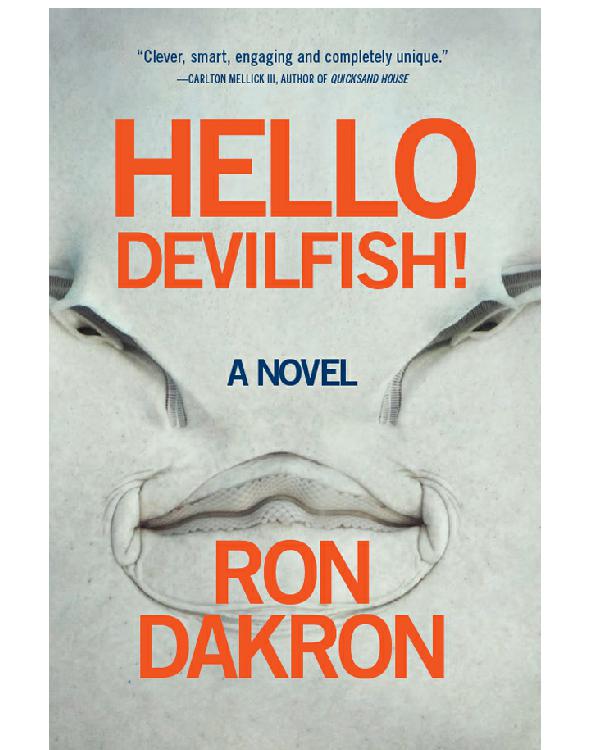
Hello Devilfish!
- اطلاعات
- نقد و بررسی
- دیدگاه کاربران
نقد و بررسی

August 4, 2014
The anarchist as social monster, scoffing at bourgeois values, is supersized into a 90-ft. “gigantor” blue stingray in this rapid-fire stomp through pop culture and Japanese monster movies. The titular creature, actually named Hello Devilfish! and also known as the “Marquis de Cod,” sprays napalm breath along with caustic commentary on the hapless residents of Tokyo while fleeing the unwanted affections of Squidra, a 100-ft. cuttlefish aiming to usurp his turf and his love. Seeking to destroy “Big Lit,” Hello Devilfish! proclaims his anti-book manifesto. Then an industrial accident shrinks him down into mere human form. Mistaken for a member of Blue Man Group, he wanders the Tokyo nightlife, sampling fast-food sea-slug sandwiches and cosplay bars, always dodging Squidra’s grasping tentacles. Dakron (Mantids) tosses out a stream of cultural criticisms warped as puns (“You gotta fight for your Reich to party”), even as he admits there’s no point in trying to upset our all-absorbing entertainment-industrial complex (“Nazi jokes are so 20th century”). Resistance may be futile, but this book at least makes it fun.

September 1, 2014
"Plots are for babies and geezers." If this novel by experimental writer Dakron (infra; Newt) has a mission statement, it's that quote from the titular narrator. The story follows a Godzilla-esque monstrous manta ray that rises periodically to destroy Tokyo for kicks. During his latest rampage, the ray is attacked and pursued by a love-struck lady monster squid that wants to mate with him, which is an inconvenience to his city-destroying plans. Hello Devilfish! (as the monster is called) doesn't just wreck Tokyo; he also tramples all over the fourth wall, detouring into several asides that rail against modern writing, classic literature, his own author, and the audience reading his book. To add to the disorientation, the story is told using Manglish, a language that approximates a bad Japanese-to-English translation. VERDICT For readers with a high tolerance of the unconventional, this is an audacious, laugh-out-loud novel that is brilliantly committed to its conceit. For more traditional readers, the kind despised by giant kaiju (monster) protagonists, it will be the literary equivalent of a headache. Recommended for fans of absurdist fiction authors such as Patrick Wensink and Carlton III Mellick.--Peter Petruski, Cumberland Cty. Lib. Syst., Carlisle, PA
Copyright 2014 Library Journal, LLC Used with permission.




دیدگاه کاربران